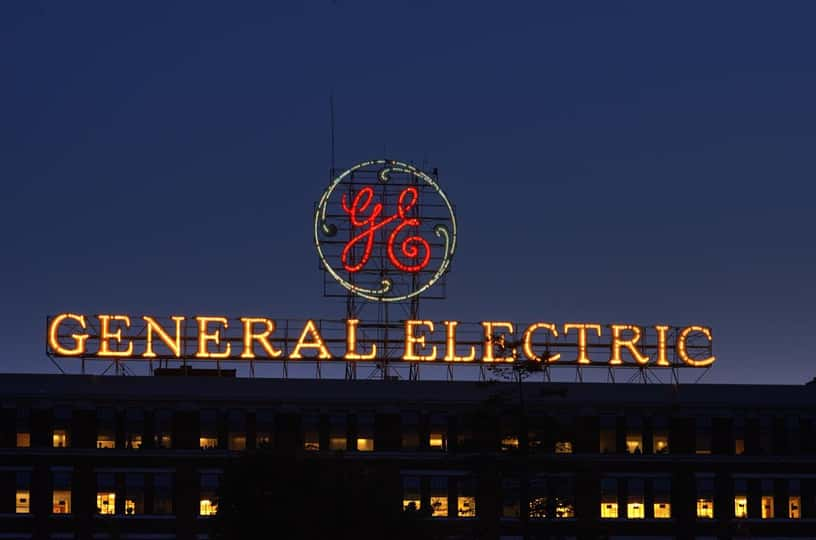General Electric Company (GE - Get Rating) operates through three major segments: Aerospace; Renewable Energy and Power; and Healthcare.
On January 4, GE completed separating its healthcare business by distributing approximately 80.1% of its shares to GE shareholders, at one share of GE HealthCare common stock for every three shares of GE common stock. GE HealthCare Technologies Inc. started trading on Nasdaq under the ticker symbol “GEHC.”
The stock has dipped 1.2% over the past month but gained 13.5% over the past six months to close the last trading session at $81.14, above its 50-day and 200-day moving averages of $69.25 and $60.24, respectively.
Let’s closely examine if its fundamentals make it worthy of consideration.
Mixed Financials
For the fourth quarter of fiscal 2022, which ended December 31, 2022, GE’s total revenues increased 7.3% year-over-year to $21.79 billion. During the same period, its organic revenues also increased 11.2% year-over-year to $21.71 billion.
GE’s adjusted profit increased 37.5% year-over-year to $2.16 billion, while its adjusted EPS increased 51.2% over the previous-year quarter to come in at $1.24.
However, while the organic revenue and profit of its Aerospace business increased 25.7% and 16.4% year-over-year, respectively, a 12.6% year-over-year decrease in revenue and a 12.1% year-over-year widening of losses in the renewable energy segment was a major drag to the top and bottom lines of GE Vernova, its portfolio of energy businesses.
As of December 31, 2022, GE’s current assets decreased marginally to come in at $66.23 billion, while its current liabilities increased 9.6% compared to its previous-year levels to come in at $56.95 billion.
Mixed Valuation
In terms of its forward P/E, GE is trading at 31.78x, 23.5% lower than its five-year average of 41.54x but 86.8% higher than the industry average of 17.01x.
Although GE’s forward EV/EBITDA multiple of 11.36 compares favorably with the five-year average of 17.13, it is higher than the industry average of 11.07.
Similarly, GE’s forward Price/Book multiple of 2.78 is 7% lower than its 5-year average of 2.99 but 6% higher than the industry average of 2.62.
Profitability Has Room for Improvement
Although GE’s trailing 12-month Gross Profit margin of 23.89% exceeds its 5-year average of 17.62%, it falls short of the industry average of 29.06%.
The company’s trailing 12-month net income margin of 0.29%, although a significant improvement from its five-year average of -8%, underwhelms in comparison to the industry average of 6.71%
Similarly, GE’s trailing 12-month ROCE, ROTC, and ROTA compare favorably to its five-year averages but unfavorably to the industry averages.
POWR Ratings Reflect Promising Prospects
GE’s robustness is reflected in its POWR Ratings. The stock has an overall rating of C, which equates to a Neutral in our proprietary rating system. The POWR Ratings are calculated by considering 118 different factors, with each factor weighted to an optimal degree.
Our proprietary rating system also evaluates each stock based on eight distinct categories. GE also has a B grade for Value, in sync with its relative undervaluation compared to historical averages.
GE ranks #16 of 36 stocks in the A-rated Industrial – Manufacturing group.
Click here to see the additional POWR Ratings for GE’s Growth, Stability, Sentiment, Quality, and Momentum.
Bottom Line
Although GE’s recent results give investors reasons to cheer, supply chain issues it has faced throughout 2022 have prevented the company from achieving desired levels of profitability, especially in its renewable energy business.
GE’s cautiously optimistic outlook for 2023 has been further underscored by the fact that analysts expect the company’s revenue and EPS for fiscal 2023 to decline 19% and 26.1% year-over-year to $62.03 billion and $1.94, respectively.
Given its relatively high valuation and the turbulent macroeconomic climate that it is expected to deal with, it would be wise for investors to wait for a better entry point in this stock.
How Does General Electric Company (GE) Stack up Against Its Peers?
While GE has an overall POWR Rating of C, which equates to a Neutral, investors could also consider looking at its A-rated industry peers: Siemens AG (SIEGY - Get Rating), The Timken Company (TKR - Get Rating), and Myers Industries, Inc. (MYE - Get Rating).
Want More Great Investing Ideas?
GE shares were trading at $83.28 per share on Friday afternoon, up $2.14 (+2.64%). Year-to-date, GE has gained 63.98%, versus a 6.14% rise in the benchmark S&P 500 index during the same period.
About the Author: Santanu Roy

Having been fascinated by the traditional and evolving factors that affect investment decisions, Santanu decided to pursue a career as an investment analyst. Prior to his switch to investment research, he was a process associate at Cognizant. With a master's degree in business administration and a fundamental approach to analyzing businesses, he aims to help retail investors identify the best long-term investment opportunities. More...
More Resources for the Stocks in this Article
| Ticker | POWR Rating | Industry Rank | Rank in Industry |
| GE | Get Rating | Get Rating | Get Rating |
| SIEGY | Get Rating | Get Rating | Get Rating |
| TKR | Get Rating | Get Rating | Get Rating |
| MYE | Get Rating | Get Rating | Get Rating |






